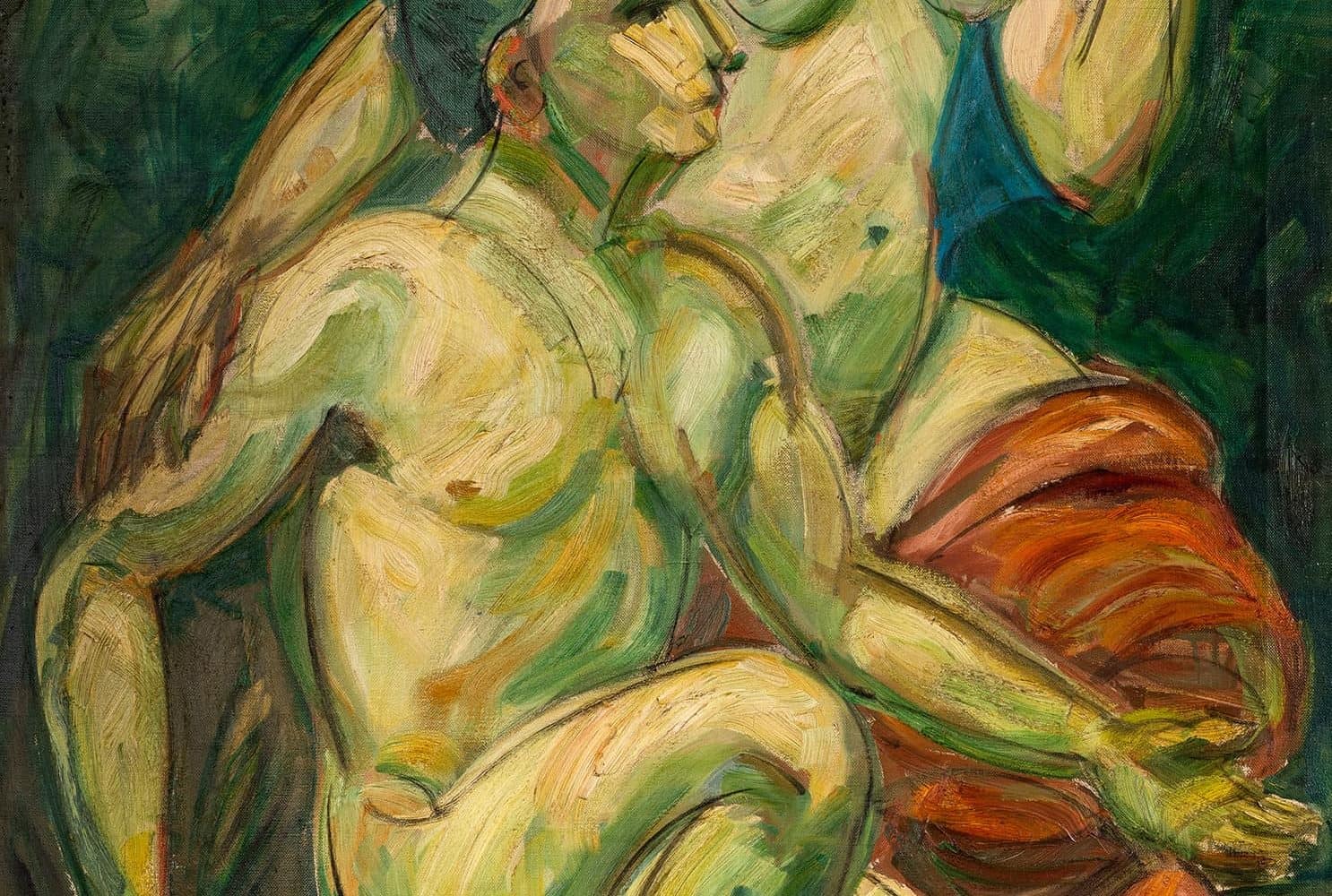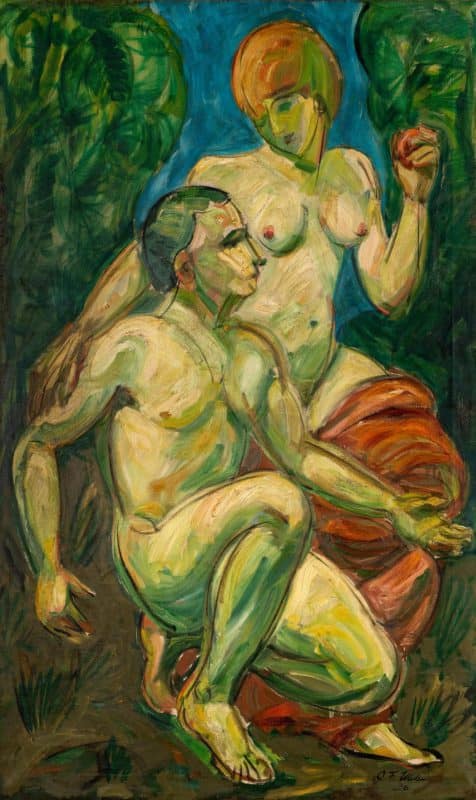

As the son of a master locksmith, Weber was originally intended to follow in his father’s footsteps. But at the recommendation of his drawing teacher, he studied with Max Bernuth at the Wuppertal School of Industrial Art. Together with Gert Wollheim, Weber went on hiking and painting tours in Westphalia. Weber continued his art studies under Carl Bantzer at the Dresden Academy of Fine Arts, then in Munich. Weber was able to travel to Paris in circa 1910. He exhibited there at the Salon d’Automne in 1911 and 1913, where, as the only German artist. He travelled to Spain in 1914, where he joined the artists’ colony in Barcelona alongside Robert and Sonia Delaunay. He married Maria Elisabeth Prestel and took on work as a political caricaturist.
He joined the Rhine Secession and two artists’ associations, the Bergische Kunstgenossenschaft and the Malkasten in Dusseldorf. During the period of National Socialism, Weber was forbidden from travelling, which made his work considerably more difficult. He nevertheless still participated in exhibitions until 1942: at the Kunstpalast am Rhein in Dusseldorf and at the Great Art Exhibition in Dusseldorf in 1937. That same year, however, numerous works by Weber were removed from public museums as part of the Nazis’ “degenerate art” campaign. A majority of his works were destroyed in a bombing raid on Wuppertal in 1943.
